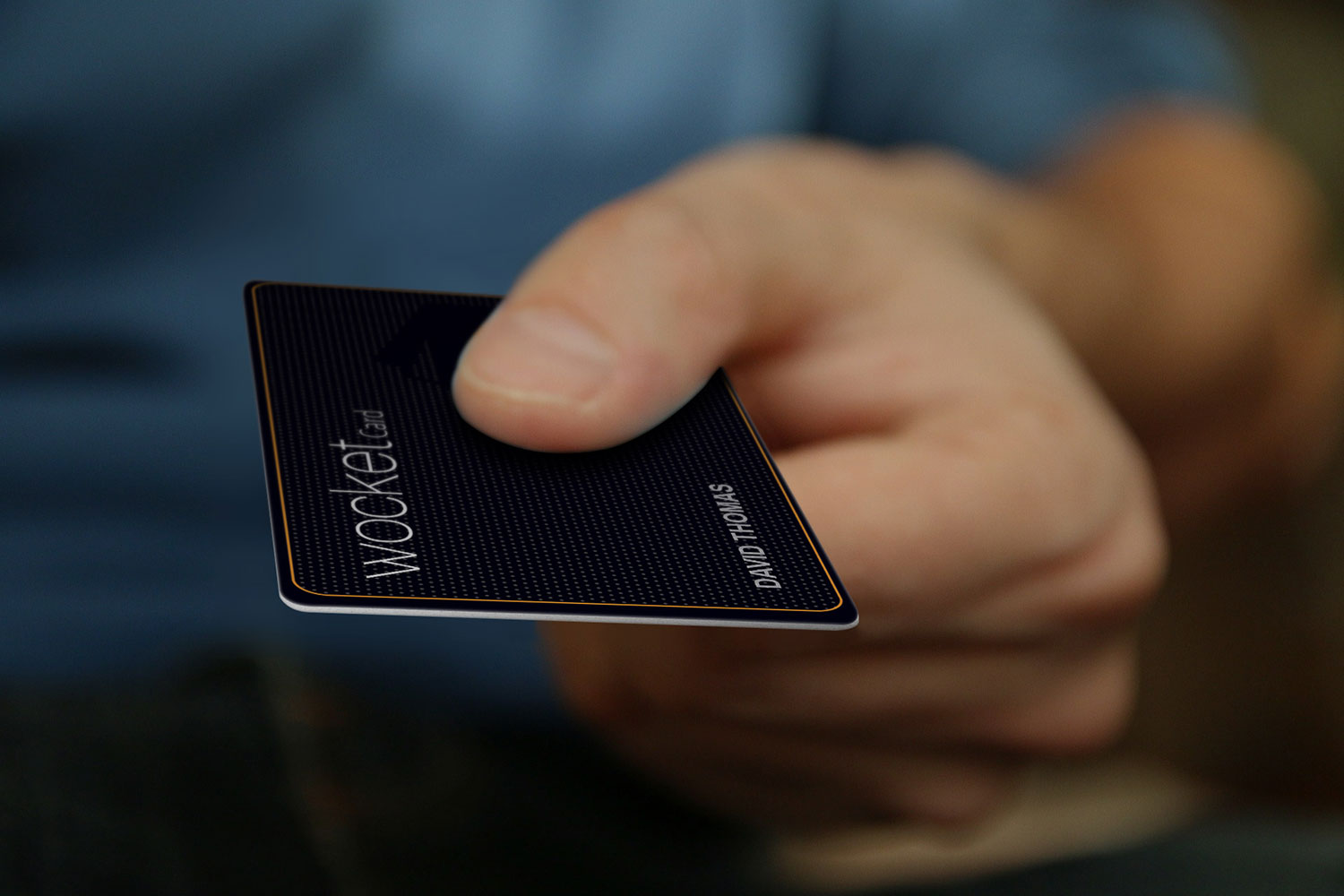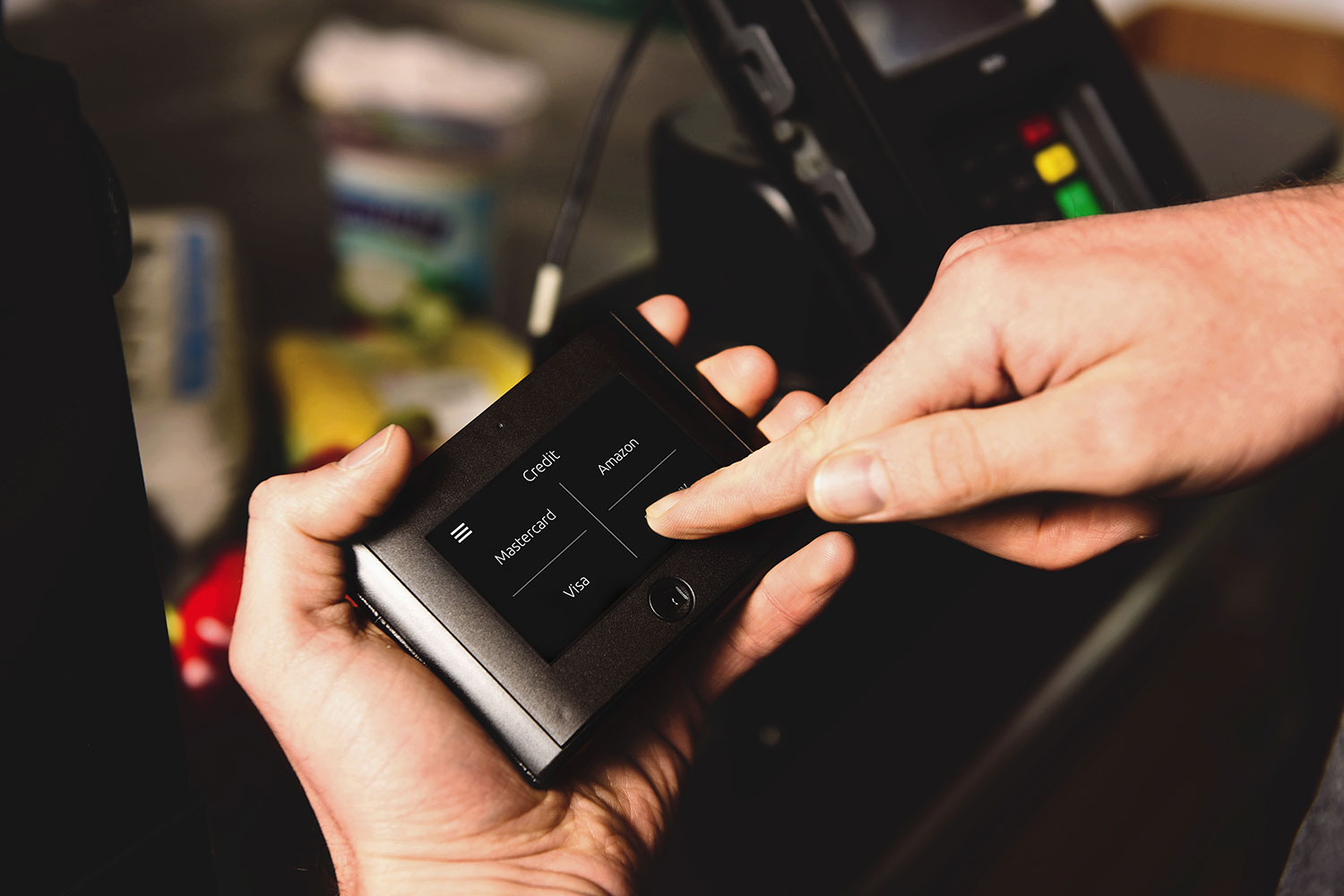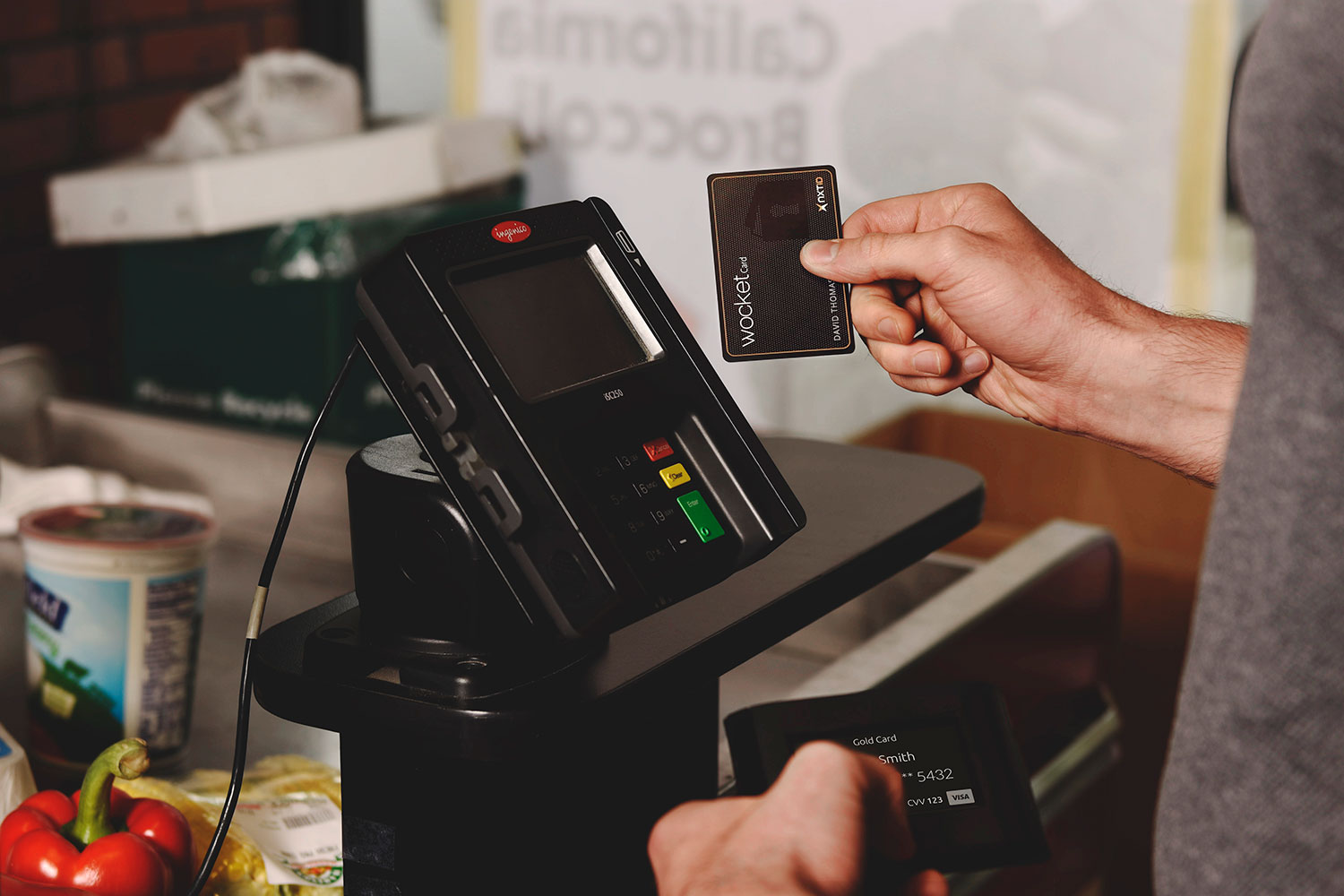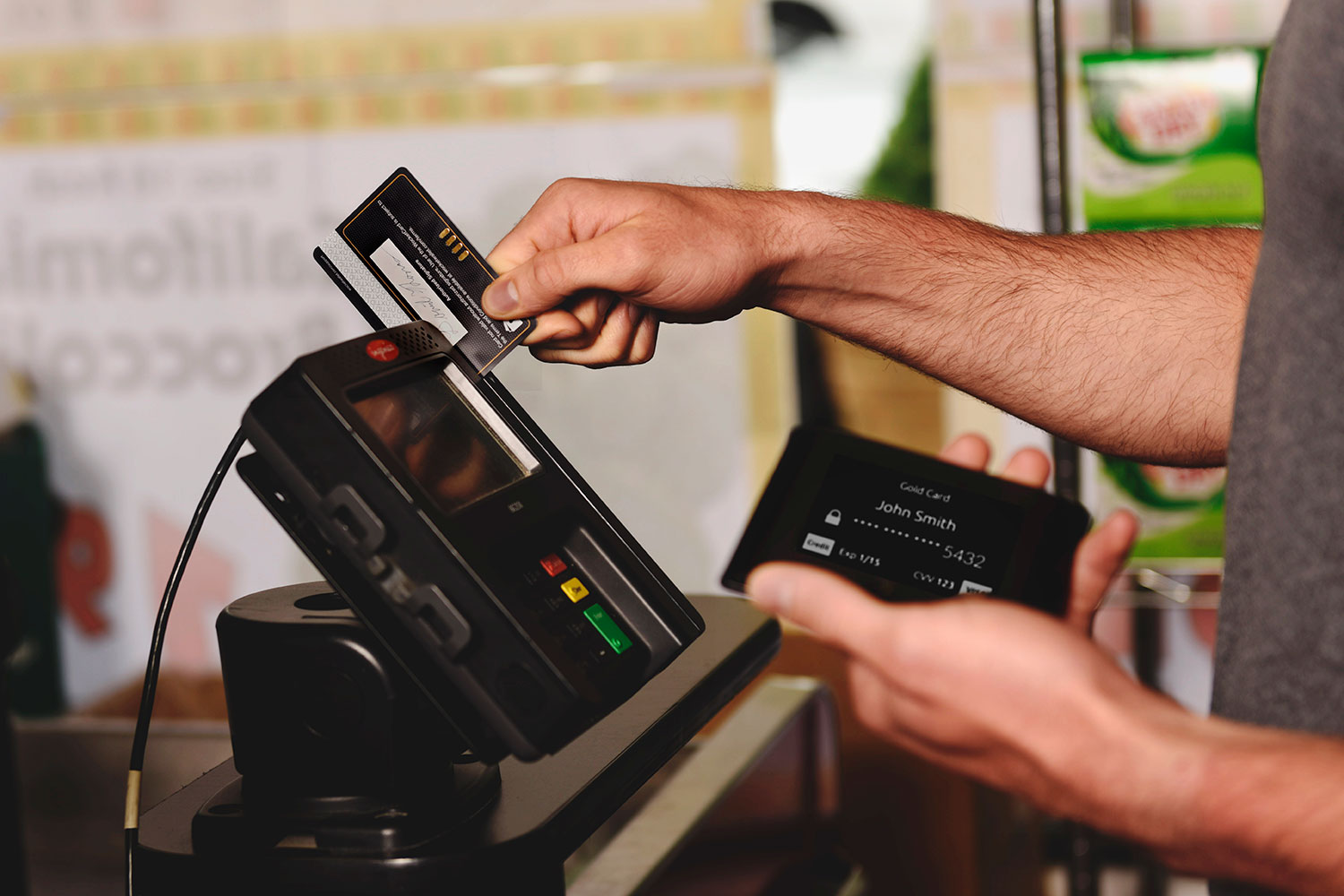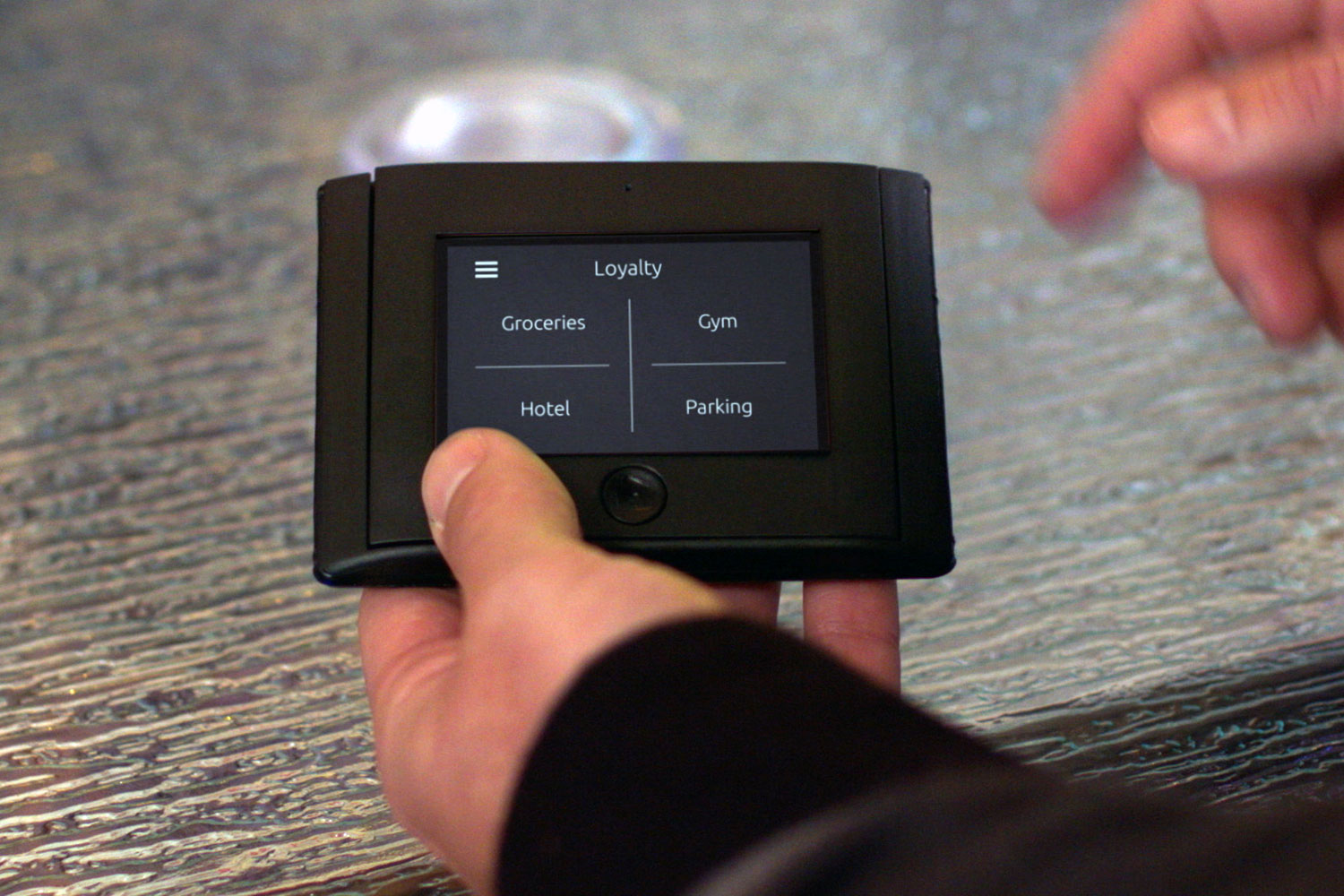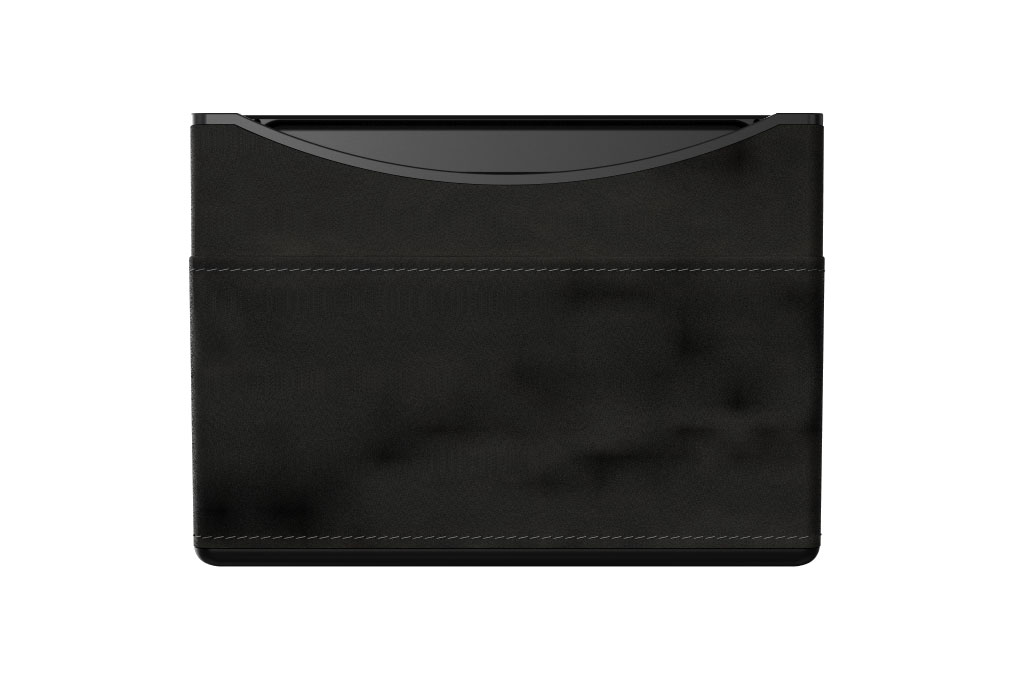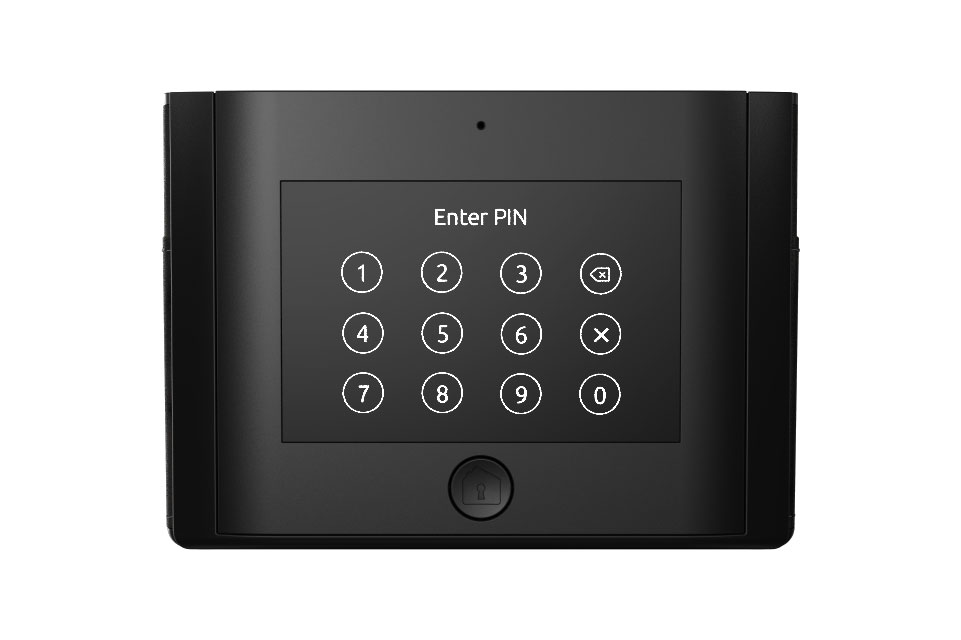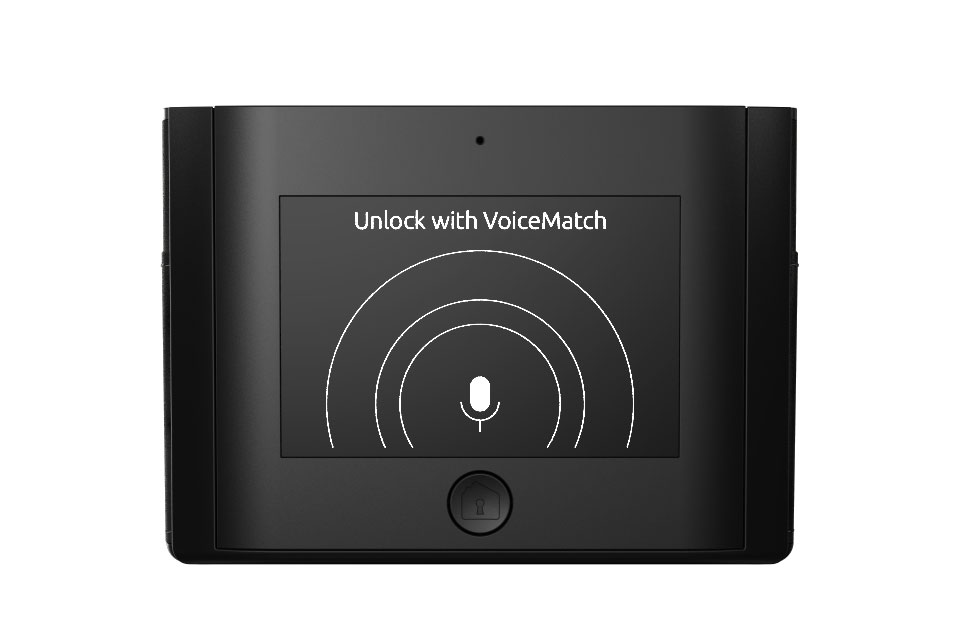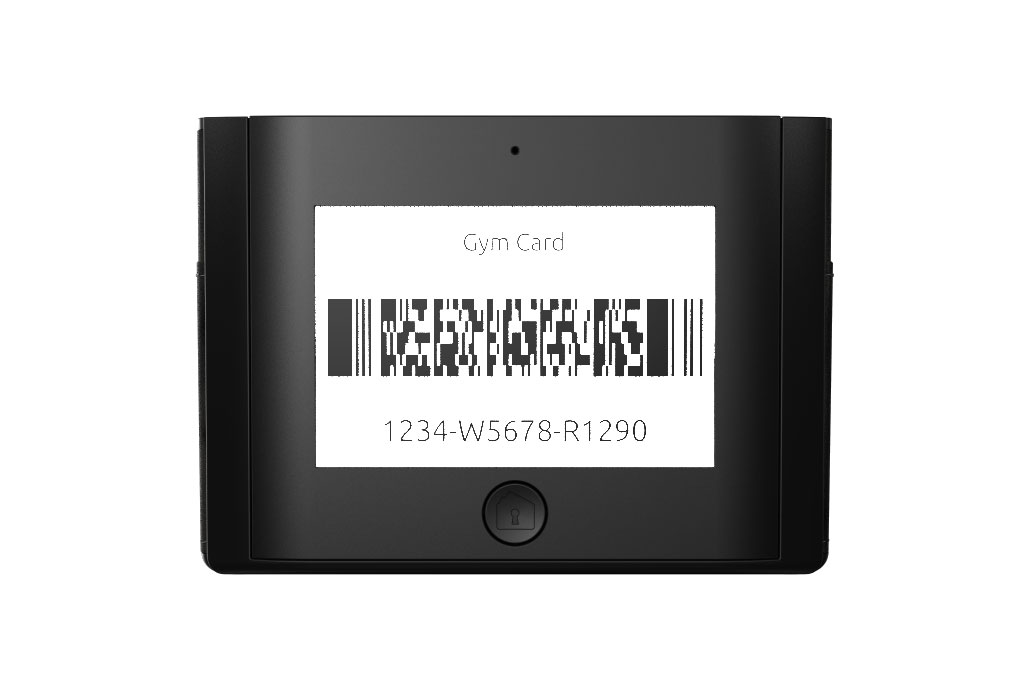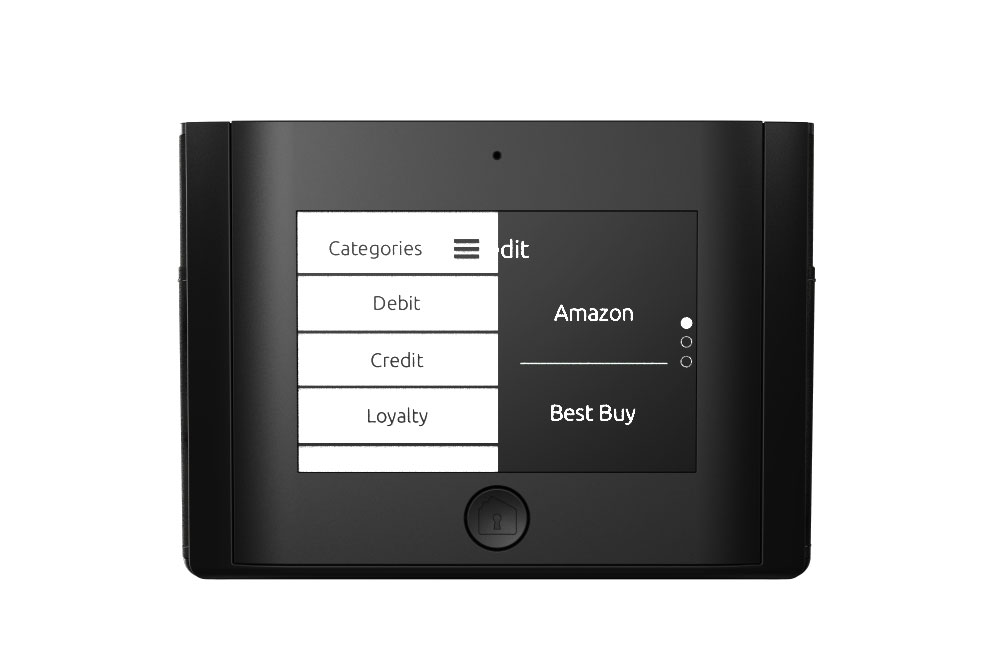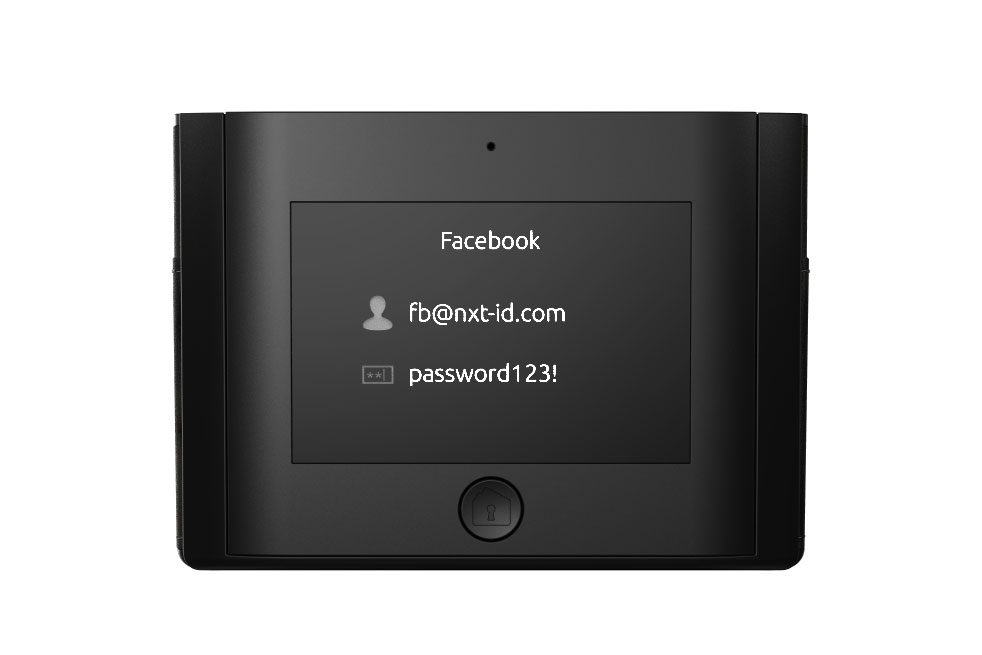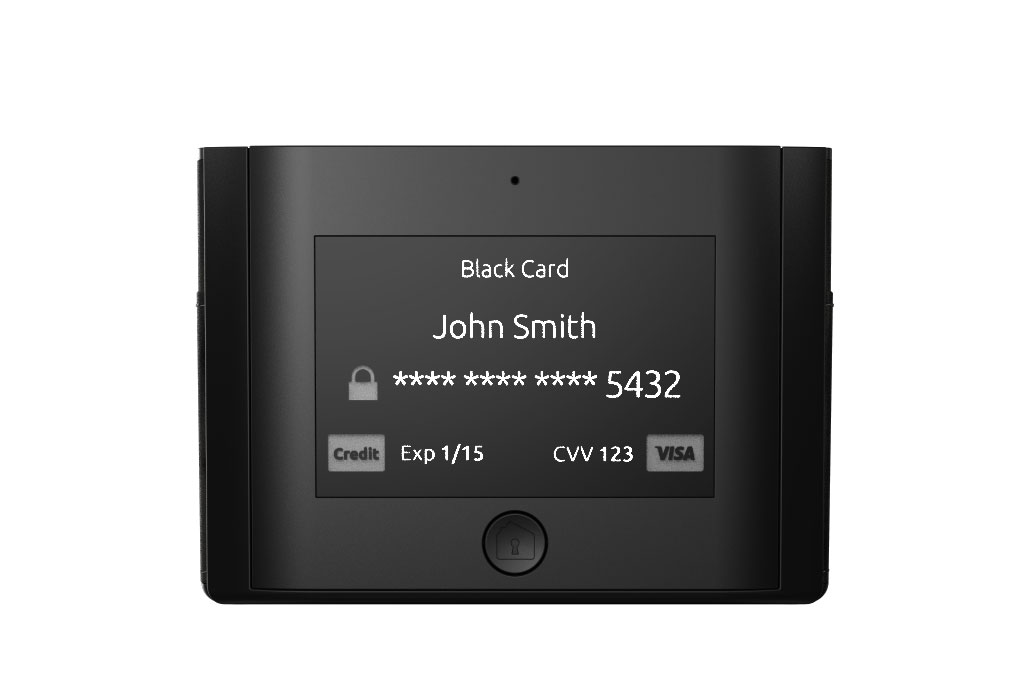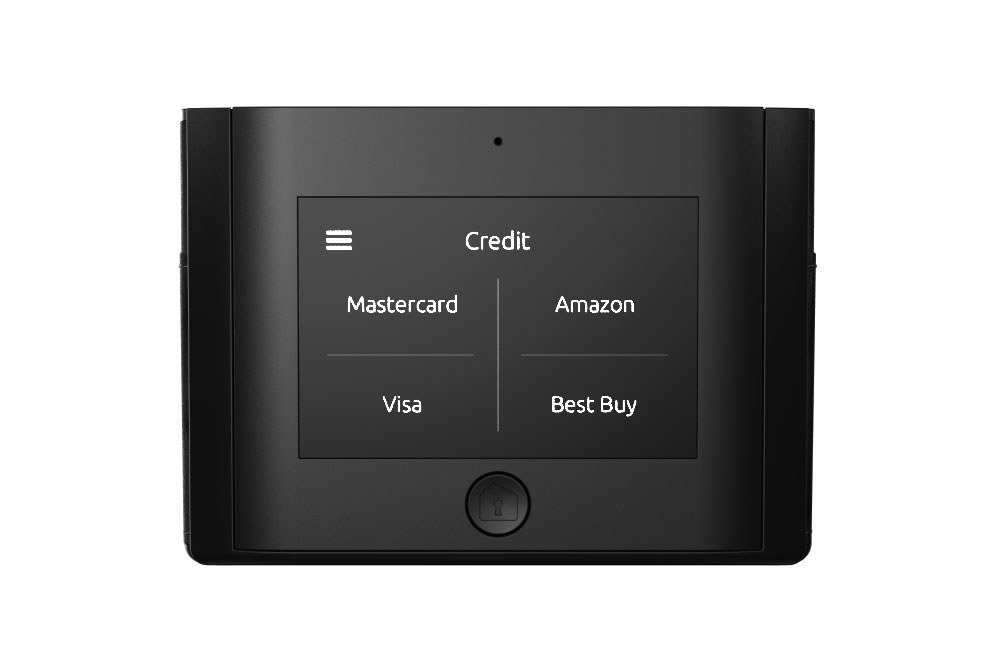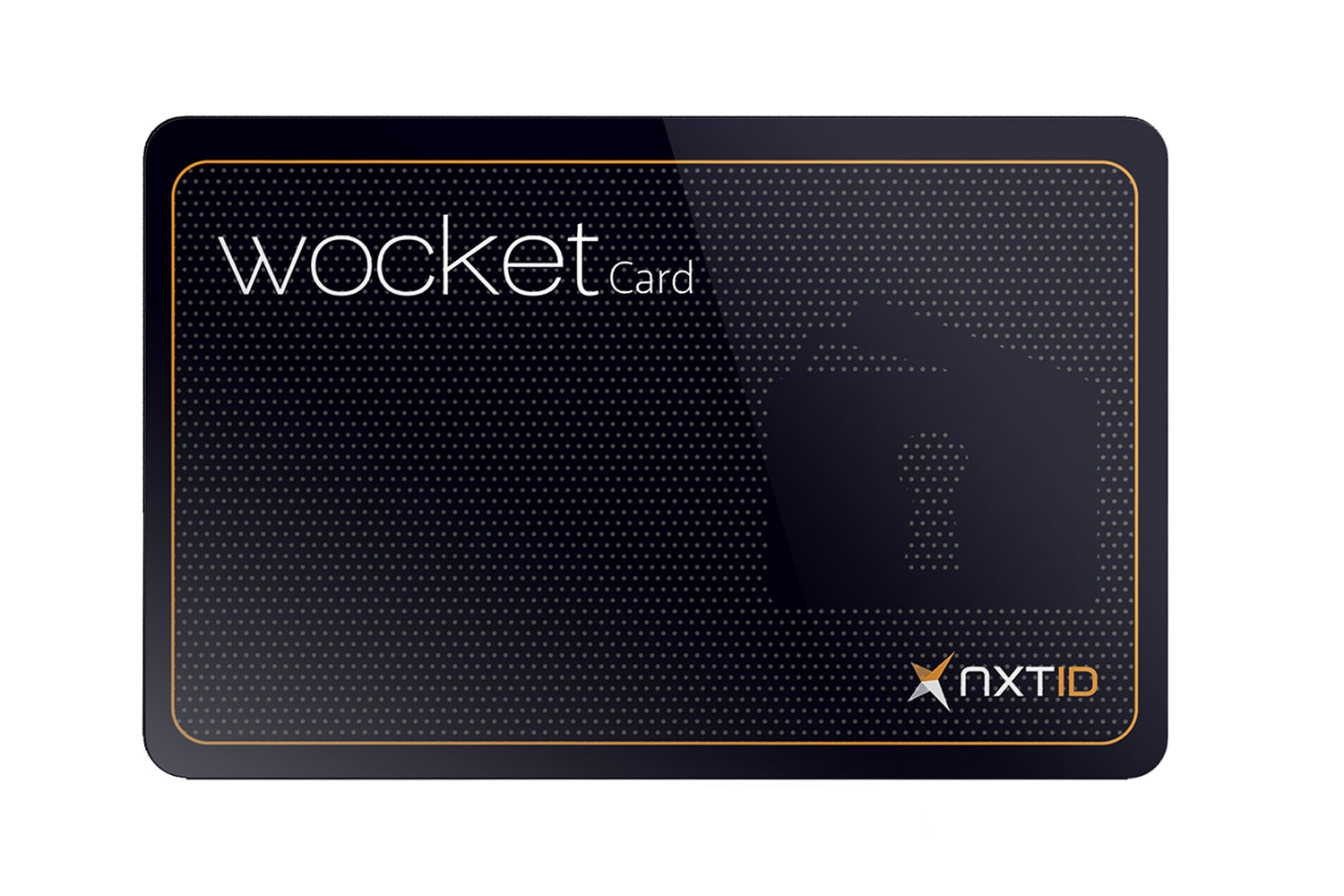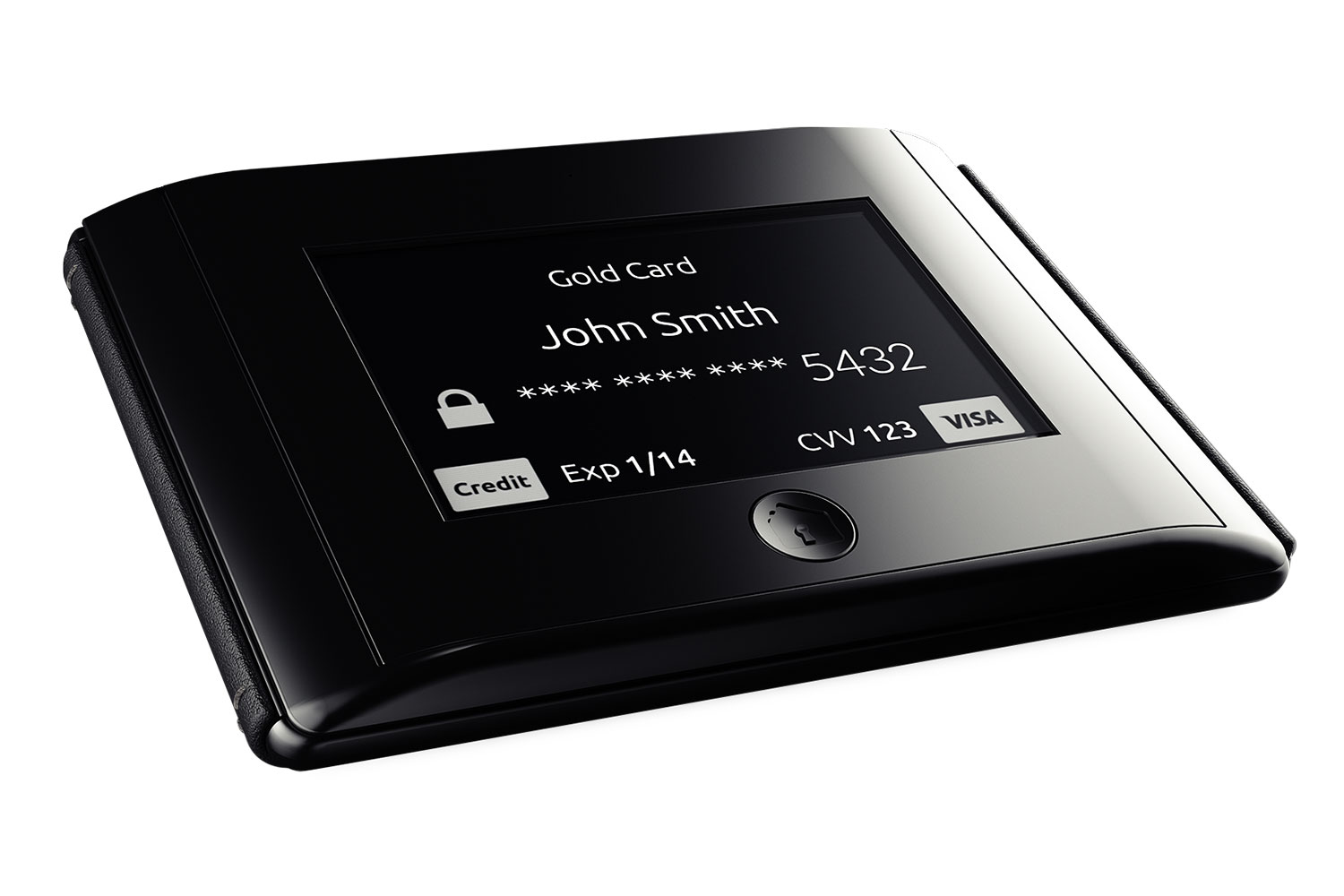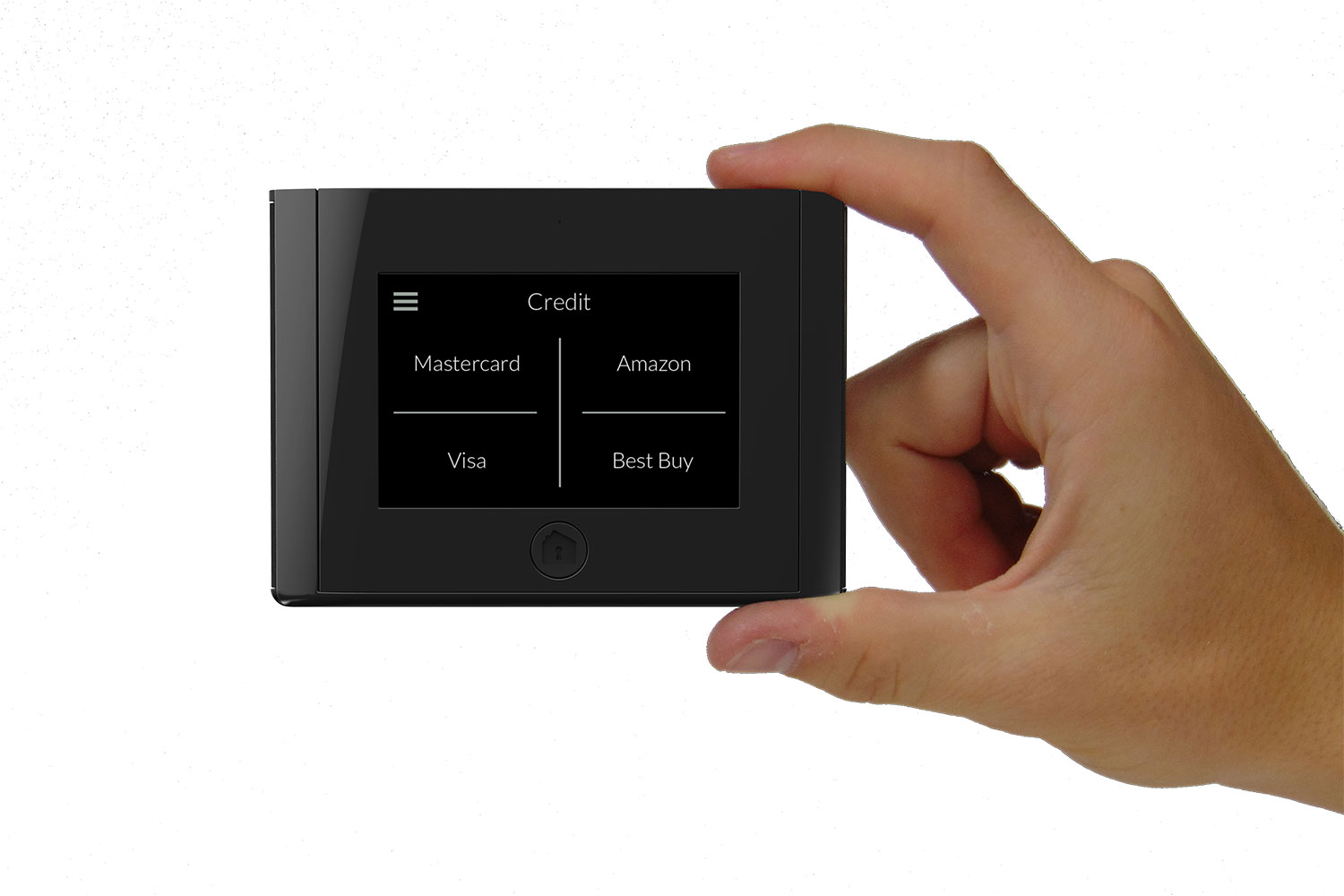The only problem? Most have struggled to make it to market. Perhaps the best-known example, Coin, won’t fulfill all of its orders until Q1 of this year, and another, Swype, is limiting pre-orders. But there’s one startup, NXT-ID, that’s miraculously managed to avoid the fate of its competitors and deliver its Wocket payment solution to virtual store shelves.
NXT-ID is not exactly an emergent brand — it unveiled the Wocket in April of last year — but the company has managed to stay true to its original vision with the latest iteration of its wallet, an impressive feat in a space as volatile as the mobile payment sector.
The Wocket’s basically made up of two components: a physical, removable credit card, and a boxy, rectangular card selector into which the aforementioned credit card fits. The card selector, which sports a touchscreen e-ink display and runs on a standard coin battery, is where the magic happens: you select a saved virtual card to assign to the physical card, which emulates a card swipe by transmitting a wireless signal to a given point-of-sales system. (The current version lacks support for contactless payments, but NXT-ID said an updated model with NFC will launch sometime in the next few weeks.)
Cards with magnetic stripes are added by swiping them through the selector, while cards with barcodes (e.g., membership, loyalty cards, or event tickets) can be manually copied numerically — enter the string of numbers below a given QR code or barcode and Wocket will generate a scannable image to match.
Somewhat unusually for a product of its category, the Wocket doesn’t rely on another device to operate — it’s meant to be used entirely independently, and only requires Bluetooth pairing to an iOS, Android, or Windows Phone smartphone for firmware updates. Security’s handled locally, too: you verify your identity by entering a pin on the Wocket selector’s touchscreen, and optionally by speaking a specific word or phrase.
NXT-ID isn’t selling the Wocket cheap — it retails for $180 in the U.S. — but the company has positioned it as a complete replacement for the everyday wallet you stick in your back pocket. It’s got a small pouch for ID cards, and NXT-ID said it’ll soon launch accessories with different materials and designs.


